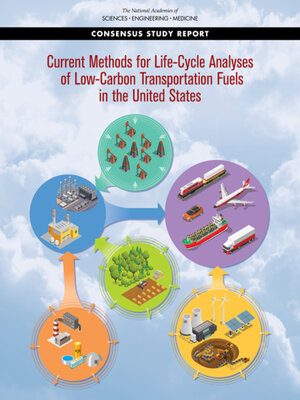Current Methods for Life-Cycle Analyses of Low-Carbon Transportation Fuels in the United States
ebook
By National Academies of Sciences, Engineering, and Medicine

Sign up to save your library
With an OverDrive account, you can save your favorite libraries for at-a-glance information about availability. Find out more about OverDrive accounts.
Find this title in Libby, the library reading app by OverDrive.



Search for a digital library with this title
Title found at these libraries:
| Library Name | Distance |
|---|---|
| Loading... |
Transportation is the largest source of greenhouse gas emissions in the United States, with petroleum accounting for 90 percent of transportation fuels. Policymakers encounter a range of questions as they consider low-carbon fuel standards to reduce emissions, including total emissions released from production to use of a fuel or the potential consequences of a policy. Life-cycle assessment is an essential tool for addressing these questions. This report provides researchers and practitioners with a toolkit for applying life-cycle assessment to estimate greenhouse gas emissions, including identification of the best approach to use for a stated policy goal, how to reduce uncertainty and variability through verification and certification, and the core assumptions that can be applied to various fuel types. Policymakers should still use a tailored approach for each fuel type, given that petroleum-based ground, air, and marine transportation fuels necessitate different considerations than alternative fuels including biofuels, hydrogen, and electricity. Ultimately, life-cycle assessments should clearly document what assumptions and methods are used to ensure transparency.







